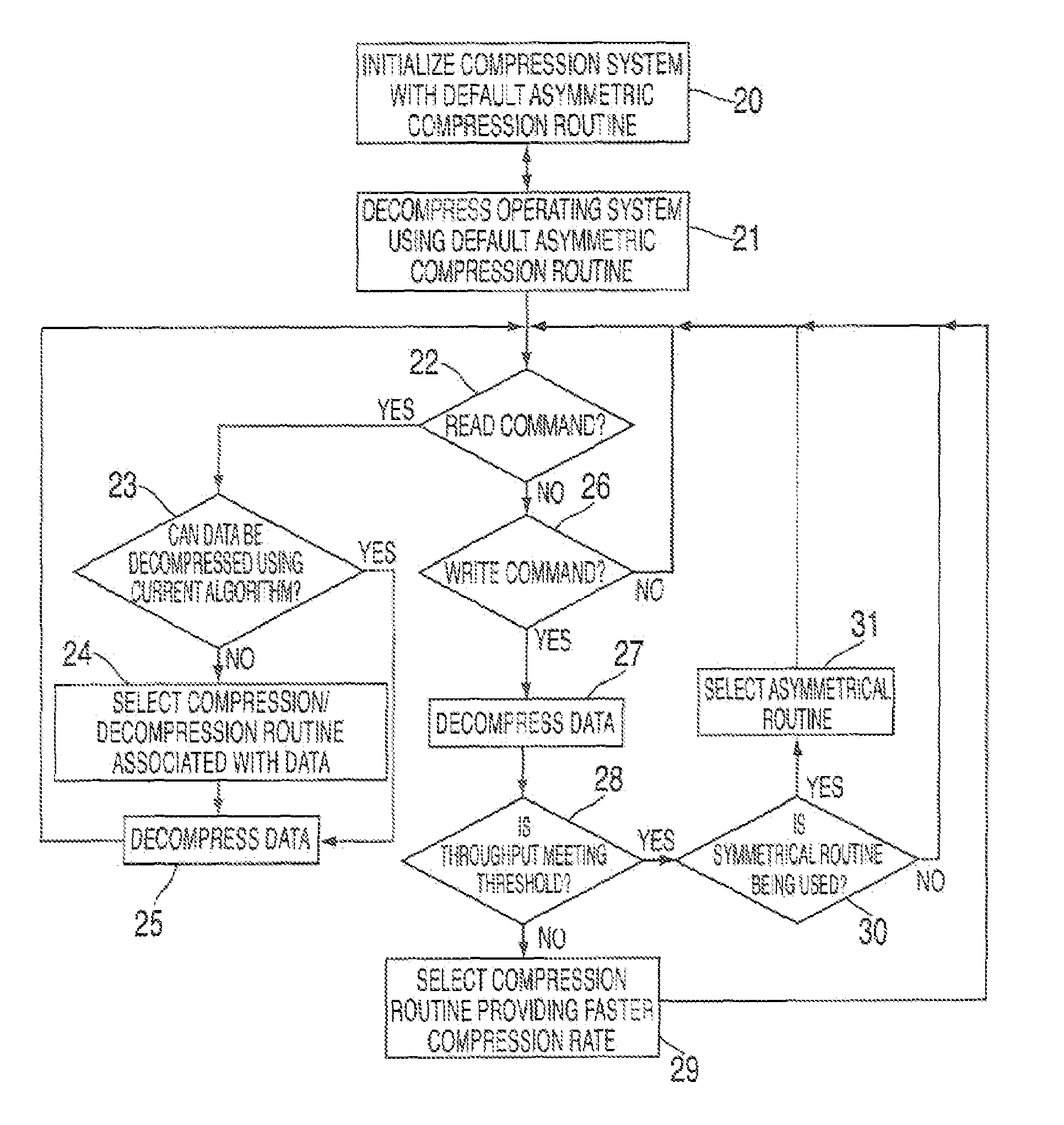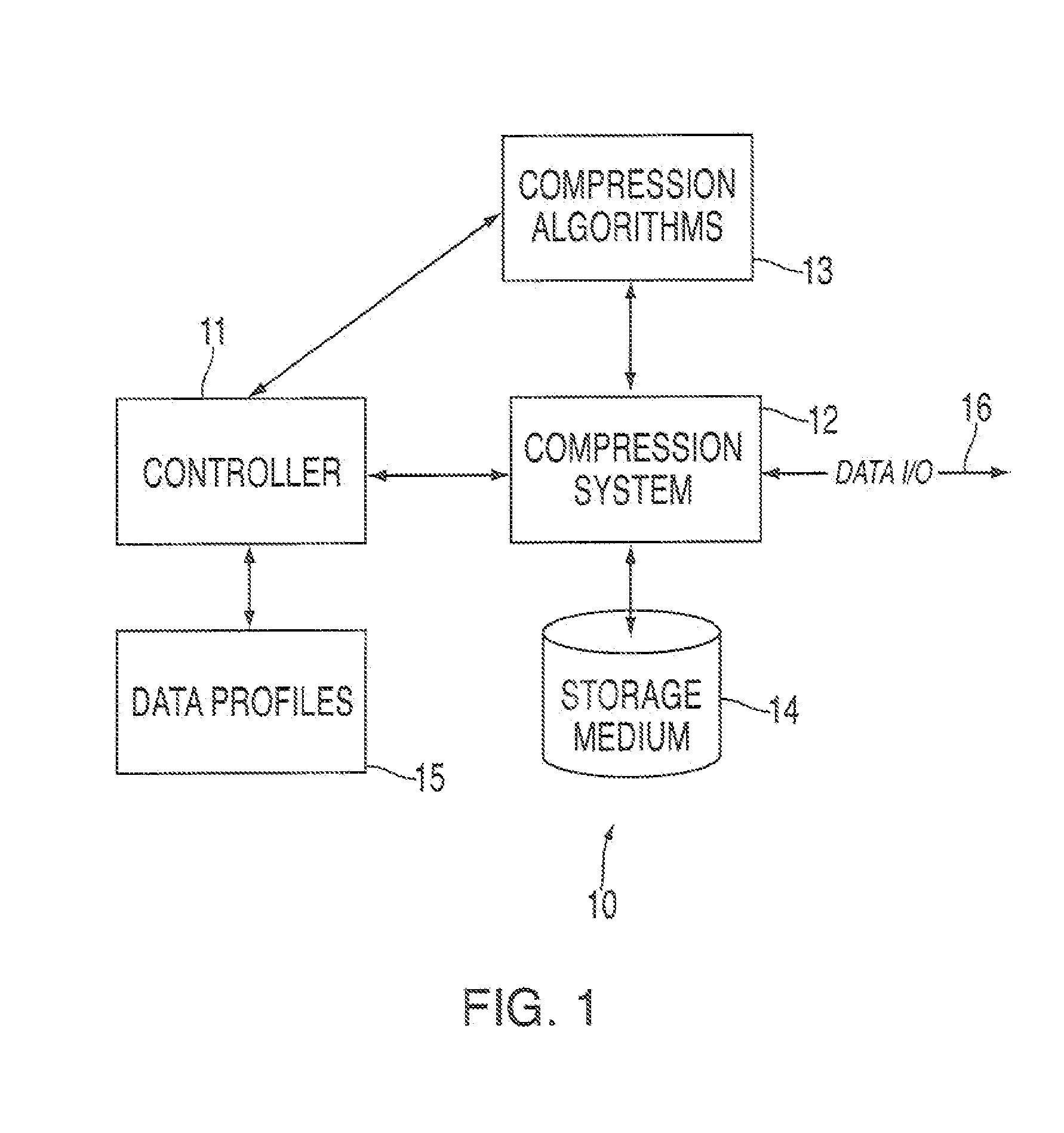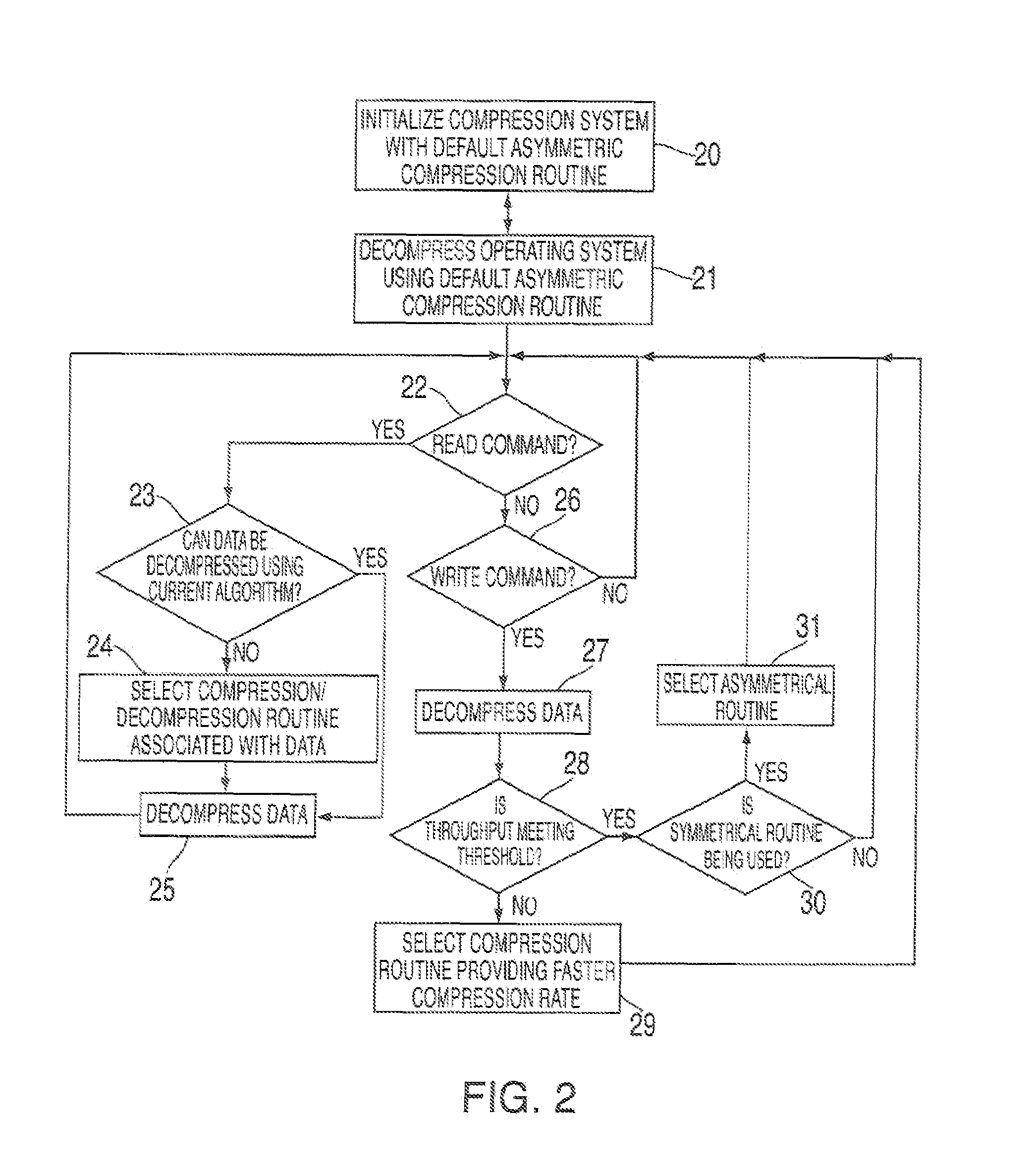Indeed, a large dictionary may be employed to yield very good compression ratios but the
algorithm may take a long time to execute.
Thus, one challenge in employing data compression for a given application or system is selecting one or more optimal compression algorithms from the variety of available algorithms.
Algorithms that compress particularly well usually take longer to execute whereas algorithms that execute quickly usually do not compress particularly well.
Yet another problem within the current art is data storage and retrieval bandwidth limitations.
Limitations in process technologies currently prohibit placing a sufficient quantity of onboard memory for most applications.
Thus one additional problem with the existing art is that memory storage devices severely limit the performance of
consumer, entertainment, office,
workstation, servers, and mainframe computers for all disk and memory intensive operations.
For example, magnetic disk
mass storage devices currently employed in a variety of home, business, and scientific computing applications suffer from significant seek-time access delays along with profound read / write
data rate limitations.
Another problem within the current art is that emergent high performance disk interface standards such as the Small Computer Systems Interface (
SCSI-3),
iSCSI,
Fibre Channel, AT Attachment UltraDMA / 100+, Serial Storage Architecture, and Universal Serial
Bus offer only higher data transfer rates through intermediate data buffering in
random access memory.
These interconnect strategies do not address the fundamental problem that all modern magnetic
disk storage devices for the
personal computer marketplace are still limited by the same typical
physical media restriction.
Thus another problem with modern data storage systems utilizing
RAID systems is that a linear increase in data bandwidth requires a proportional number of added
disk storage devices.
Another problem with most modern
mass storage devices is their inherent unreliability.
More complex techniques are also employed that support various trade-offs between data bandwidth and
data reliability.
A failure of a single drive results in a complete loss of all data.
Thus another problem with
RAID systems is that low cost improved bandwidth requires a significant decrease in reliability.
This tends to decrease data bandwidth from even that of a single comparable disk drive.
Hence, another problem with
RAID systems is the high cost of increased reliability and associated decrease in performance.
Thus another problem with redundant modern
mass storage devices is the degradation of data bandwidth when a storage device fails.
Additional problems with bandwidth limitations and reliability similarly occur within the art by all other forms of sequential, pseudo-random, and
random access mass storage devices.
Yet another problem within the current art is the application and use of various data compression techniques.
Lossy data compression techniques provide for an inexact representation of the original uncompressed data such that the decoded (or reconstructed) data differs from the original unencoded / uncompressed data.
One fundamental problem with almost all modern approaches is the
compression ratio to encoding and decoding speed achieved.
As previously stated, the current theoretical limit for data compression is the entropy limit of the
data set to be encoded.
However, in practice, many factors actually limit the compression ratio achieved.
This is followed in turn by dictionary compression,
Huffman coding, and run-length coding with respectively decreasing execute times. What is not apparent from these algorithms, that is also one major deficiency within the current art, is knowledge of their
algorithmic efficiency.
This is almost never achieved in practice due to limitations within modern optimizing
software compilers.
Furthermore, these
bad sector replacement maps are definable on a disk by disk basis.
Practical limitations in the size of the data required to both represent and process an
individual data block address, along with the size of
individual data blocks, governs the type of
file allocation tables currently in use.
Thus one limitation within the current art is that disk
file allocation tables and associated
file management systems are a compromise between efficient data storage, access speed, and addressable
data space.
Thus another significant problem within the current art is that file systems are not able to randomly access compressed data in an efficient manner.
Further aggravating this problem is the fact that when data is decompressed, processed and recompressed it may not fit back into its original
disk space, causing disk fragmentation or complex
disk space reallocation requirements.
For very
small files this technique is often adequate, however for larger files the compression and decompression times are too slow, resulting in inadequate
system level performance.
In addition, the ability to access randomly access data within a specific file is lost.
A group of blocks is compressed and decompressed as a unit, thus there exists practical limitations on the size of GOBs.
If GOBs are small compression ratios are low and
processing time short.
Conversely, when GOBS are large compression ratios are higher and
processing time is longer.
Several problems exist within the current art for the management of compressed blocks.
However as files are processed within the computers, files may grow or shrink in size.
Conversely when a file grows substantially, the additional space required to store the data may not be available contiguously.
The result of this process is substantial disk fragmentation and slower access times.
One problem with this method is that average file access times are substantially increased by this technique due to the random data storage.
Peak access delays may be reduced since the statistics behave with a more uniform white
spectral density, however this is not guaranteed.
A further layer of complexity is encountered when compressed information is to be managed on more than one data storage device.
 Login to View More
Login to View More  Login to View More
Login to View More 


